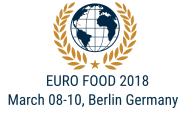
Joong-Ho Kwon
Kyungpook National University, South Korea
Title: Optimization of supercritical fluid extraction of bioactive compounds from Stevia rebaudiana (Bertoni) leaves by Response Surface Methodology (RSM) and Artificial Neural Network (ANN) modeling
Biography
Biography: Joong-Ho Kwon
Abstract
Statement of the Problem: Stevia rebaudiana as South American shrub is well-known worldwide and consists of more than 100 phytochemicals including phenolic and flavonoid compounds. The toxicity of synthetic antioxidants has also increased demand of natural antioxidants. Traditional extraction involves high consumption of solvent, time and energy and renders lower extraction yields due to poor efficiency. Supercritical Fluid Extraction (SFE) as modern green extraction method has garnered attention in recent years.Methodology & Theoretical Orientation: Conventional Maceration Extraction (CME) for 24 h was used for extracting stevia extracts. In this study, Response Surface Methodology (RSM) and Artificial Neural Network (ANN) modeling were compared for their estimation capabilities to build effective models with maximum response values: Y1 (Total Phenolic Content: TPC) and Y2 (total flavonoid content: TFC). SFE process was optimized by central composite design of RSM to achieve maximum TPC and TFC as function of independent SFE process parameters with following ranges: X1=modifier concentration (0–40%), X2=extraction temperature (25–65°C) and X3=pressure (75–375 bar). Findings: Maximum values of target responses from SFE extracts were TPC of 29.56 mg GAE/g DM and 23.51 mg CE/g DM under optimum SFE conditions of X1 of 40%, X2 of 45 °C and X3 of 225 bar. ANN model proved its superiority as potential alternative to RSM owing to improved estimation and predictive capabilities. Moreover, results indicated that SFE yielded higher yields TPC and TFC in comparison with time-consuming CME.
Conclusion & Significance: SFE yielded higher TPC and TFC in comparison with time-consuming CME and was more efficient as a green extraction method with less CO2 emission and significantly reduced consumption of solvent, time and energy. Hence, the phenolic and flavonoid compounds from stevia may be employed as natural antioxidants with pertinent health benefits.

